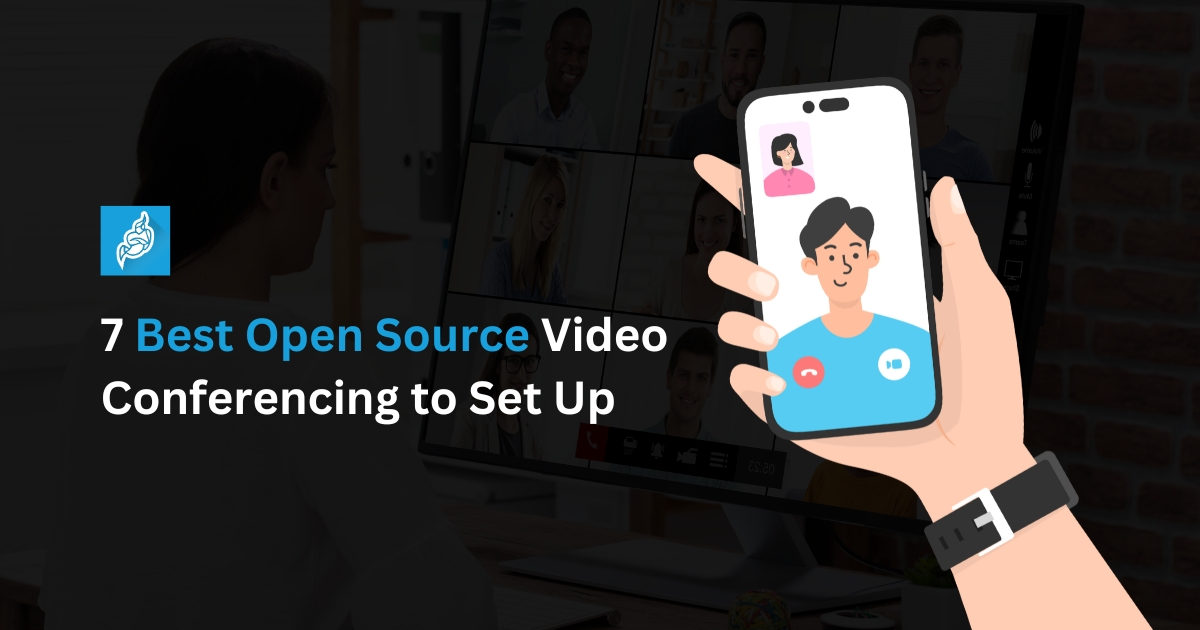Looking to take control of your video meetings with powerful, open source tools?
In a world where remote collaboration is the norm, relying on big-name platforms can be expensive—and limiting. That’s why more developers, businesses, and even IT teams are turning to open source video conferencing tools. They give you privacy, customization, and control without the cost of commercial licenses.
If you’re planning to set up video conferencing using open source software, this guide is for you.
Let’s start with the one leading the pack: Jitsi Meet.
1. Jitsi Meet (Self-Hosted & Scalable)
Jitsi Meet is one of the most popular video meeting open source platforms available today. What makes it a favorite? It’s easy to deploy, totally free, and has no cap on the number of users.
Why Jitsi Stands Out:
- No account needed for participants
- Fully encrypted and private
- Runs on WebRTC, no installations required
- Built-in chat, screen sharing, recording, and more
How to Set Up Jitsi Meet To set up video conferencing using open source software like Jitsi:
- Use a VPS (Virtual Private Server) with decent resources (2vCPU, 4GB RAM minimum)
- Install Ubuntu 20.04 or later
- Run Jitsi’s Quick Install script:
sudo apt update
sudo apt install -y wget curl
wget -qO - https://download.jitsi.org/jitsi-key.gpg.key | sudo apt-key add -
sudo apt-add-repository 'deb https://download.jitsi.org stable/'
sudo apt update
sudo apt install jitsi-meet- Use Let’s Encrypt SSL setup for HTTPS
And you’re done. You now have your own Jitsi Meet self-hosted instance.
Scaling Jitsi for Large Meetings
For organizations expecting high traffic:
- Set up Jitsi Videobridge Load Balancer
- Deploy multiple JVB instances with a load balancer like HAProxy
- Use Octo (Jitsi’s built-in scalability layer)
- Optimize with TURN servers for NAT traversal
Jitsi’s scalability, especially when tuned correctly, can rival enterprise-grade platforms.
2. BigBlueButton
Designed for online learning and webinars, BigBlueButton is a powerful open source alternative. It’s more suited for education-focused use cases.
Features:
- Whiteboard and polling
- Multi-user screen sharing
- Integrated with Moodle and Canvas
Use Case: Ideal if you’re managing a remote training or classroom environment.
3. Nextcloud Talk
A component of the broader Nextcloud ecosystem, Talk offers simple, secure, and private video communication for teams.
Features:
- Runs directly within the Nextcloud dashboard
- Perfect for internal team meetings
- Excellent integration with file sharing and calendars
Best For: Companies already using Nextcloud for collaboration.
4. Rocket.Chat + Jitsi Integration
Rocket.Chat is a popular open source team chat platform. When combined with Jitsi, you get a Slack-like chat and Zoom-like video experience.
Setup Benefits:
- Real-time messaging + on-demand video calls
- Fully customizable UI
- Deployable on your own servers
Use Case: If you want to offer chat + video like a SaaS product.
5. Matrix + Element Call
The Matrix protocol is a decentralized communication framework. Element is its most well-known client, and Element Call brings voice/video into the mix.
Why It’s Unique:
- Peer-to-peer, decentralized setup
- Excellent for privacy-focused deployments
Use Case: Ideal for secure internal communication or privacy-first projects.
6. Jami
Jami is a truly distributed open-source video conferencing system. No servers, no central point of failure.
Key Advantages:
- Peer-to-peer architecture
- No need to trust a central server
- Great for 1:1 or small group calls
Best For: Teams needing high privacy without hosting overhead.
7. OpenVidu
OpenVidu offers a development-friendly platform for building custom video apps. You can integrate live video into your app with extensive APIs.
Highlights:
- WebRTC-based video streaming
- Browser and mobile SDKs
- Integrate into any web application
Use Case: If you’re building a product that needs embedded video meetings.
Conclusion
If you want full control over your video infrastructure, open source video conferencing tools are your best bet. Jitsi Meet stands out for ease of setup, strong community, and proven scalability.
Whether you’re looking to support a team, host events, or even build your own SaaS product, there’s a solution on this list for you.
Now’s the time to take control of your meetings. Set up video conferencing using open source software and unlock a world of flexibility and security.
Need help with Jitsi Meet deployment or scaling? Book a meeting to talk with an expert.
FAQ
Yes, most tools like Jitsi, BigBlueButton, and Element are end-to-end encrypted or allow you to manage your own infrastructure.
Absolutely. Most are under permissive licenses like Apache 2.0 or GPL.
Jitsi Meet. With a few commands, you can get a live server running within an hour.
Yes. You’ll need to configure Videobridge clusters and TURN servers, but it can handle thousands of users.
Self-hosting gives you full control and lower costs long-term, while managed services reduce your technical workload.



